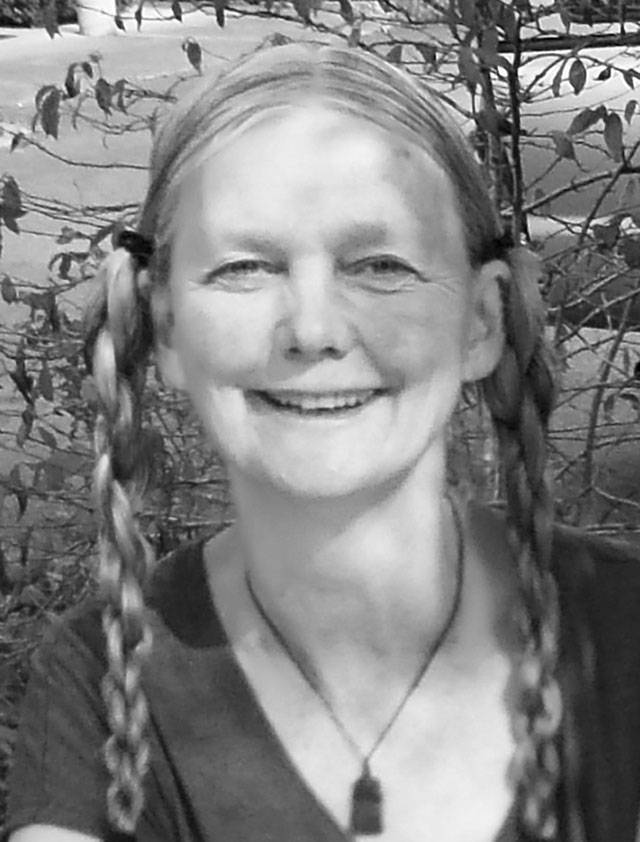How’s your lawn doing? This summer, like the one in 2015, has been hard on lawns. For many, the only green plants visible now are dandelions, which makes them all the more noticeable. Don’t get me wrong, dandelions are great for pollinators, but can’t we have a nice looking lawn and a few flowers to help out the pollinators?
Indeed we can. The concept is variably called eco-turf, eco-lawn, bee lawn or eco-friendly lawn. It’s high time we took a good look at doing our lawns differently, because the word is out that these hot, dry summers could continue. Plus, the time leading up to fall is the best time to switch to a better kind of lawn: one that will stay green all summer with minimal water, no regular fertilizing, is mowed less often and never experiences toxic poisons like 2,4-D. Think of it. No more high water bills or well worries. You might be able to let your lawn crew go, because you won’t need weekly mowing. Disease and insect damage are less likely, because eco-friendly lawns are usually a mix of grass and tough low-growing perennials, not a monoculture of a single type of grass.
It’s a beautiful vision. But can this really work on Vashon-Maury Island? Yes. It’s being done right now at Vashon High School. Take a closer look at the turf around the high school the next time you visit. The eco-lawn there is a mix of ryegrass, fescue, dwarf yarrow, English daisies, Baby Blue Eyes and a small amount of clover. Seeded in 2014, it is now well-established. The high school’s eco-lawn uses half the water of a typical lawn, requires two-thirds as much mowing time, minimal fertilizing and no toxic herbicides. This is good for both the quantity and quality of stream and aquifer water, the salmon in the streams, the school maintenance budget and the health of the students who plop down on the grass for a break.
Want one of these amazing new lawns for yourself? The low-cost way is to mow your existing lawn very short, hard rake the grass to expose the soil as much as possible, spread lime if needed and add half an inch of organic compost. Then, overseed with the new eco-lawn seed mix of your choice between mid-September and the first week in October, when the forecast calls for rain. Roll the lawn so the seed gets good contact with the soil and make sure the seed and baby seedlings don’t dry out until the rains are regular. You will need to overseed yearly until you like the look and feel of your new eco-lawn.
Or, you can start over completely: kill off your existing lawn, amend the soil and seed anew. If you choose this method, you have all winter to smother your current traditional lawn with cardboard or plastic. Or, you can rent a Bobcat from Island Home Center and Lumber to scrape off the grass and weeds, then modify the soil as needed. You could be ready to plant this fall.
There are two seed companies that can help you with your eco-lawn project: Pro Time Lawn Seed and Sunmark Seed. The list of seed mixes you can purchase is daunting, but one or both of these companies are sure to have exactly what you want, even your own custom mix. Here are some of Pro Time’s standard seed mixes, some of which may soon be available at Island Home Center and Lumber: Fleur de Lawn, Xeriscape Lawn Alternative, Deer Resistant Meadow Mix, Butterfly and Hummingbird Meadow Mix and Pacific Northwest Wildflower Mix. Sunmark has similar mixes. Here are just a few: Ecology Mix, Lawn Bloomers, Native Eco Turf and Native Pollinator.
If you can’t decide which one you want in time for this fall’s window of opportunity for seeding, don’t worry. You can seed in the spring when soil temperatures are 50 degrees or warmer. Whether you decide to seed in the fall or in the spring, the first summer after seeding you will need to water your new eco-lawn well, while the new plants are getting established. Once they make it through a full winter, you can cut back on the water. Then you can really enjoy your eco-lawn and its many benefits, including your new-found freedom from the tyranny of turf.
— Diane Emerson is an islander and gardener. Garden Green is a community effort to reduce the use of toxic pesticides, supported in part by the Rose Foundation for Communities and the Environment. Visit gardengreen.webs.com for more information.



